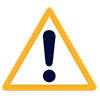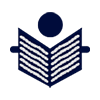


https://www.pharmacompass.com/pdf/news/jongu-4308-issues-voluntary-nationwide-recall-of-hydro-pineapple-burn-due-to-the-presence-of-undeclared-sibutramine-1629189013.pdf

https://www.fda.gov/safety/recalls-market-withdrawals-safety-alerts/dash-xclusive-issues-voluntary-nationwide-recall-imperia-elita-vitaccino-coffee-due-presence-0

07 May 2019
// FDA
https://www.pharmacompass.com/pdf/news/golean-detox-us-receives-fda-warning-letter-1557211140.pdf

21 Nov 2018
// FDA
https://www.pharmacompass.com/pdf/news/enforcement-report-week-of-november-21-2018-1542783991.pdf

16 Oct 2018
// FDA
https://www.pharmacompass.com/pdf/news/fat-burners-zone-issues-voluntary-nationwide-recall-of-zero-xtreme-1539751420.pdf

11 Sep 2018
// Joshua Cohen FORBES
https://www.forbes.com/sites/joshuacohen/2018/09/10/belviq-study-results-may-improve-the-fortunes-of-weight-loss-drugs/#2cefd3836a40